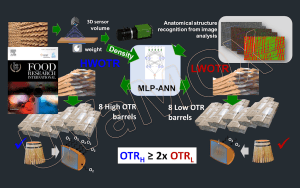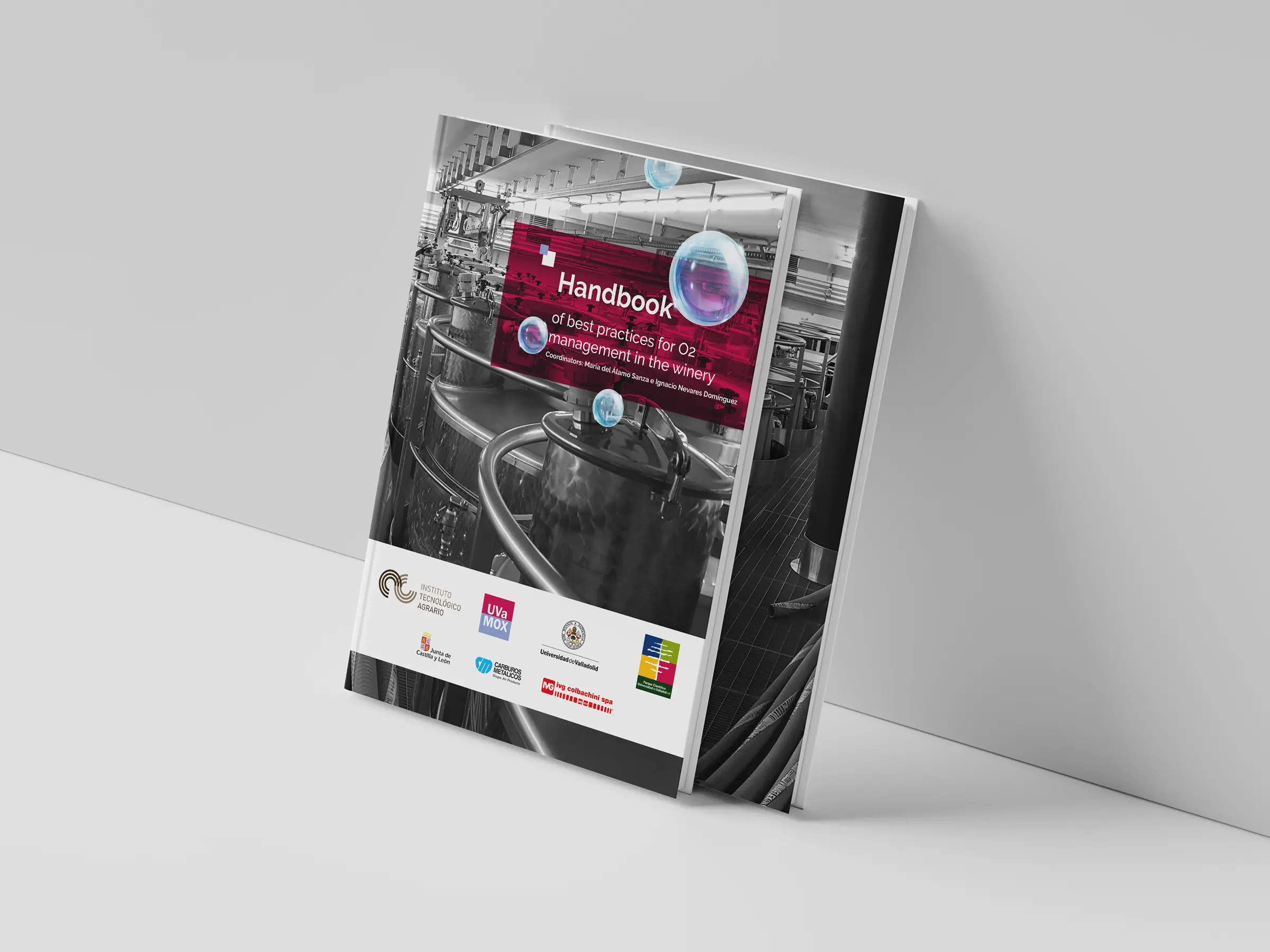Customized oxygenation barrels as a new strategy for controlled wine aging
S.Prat-García; I.Nevares; V.Martínez-Martínez y M.del Alamo-Sanza
The process of aging red wines in barrels is a common practice that aims to improve the quality of the wine. Oxygen, together with the compounds released by the oak wood, is responsible for this improvement through interaction with the wine compounds during the process. Wood as a natural product presents a series of highly significant discontinuities in its characteristics, not only between trees of the same species, but even between different areas of the same log. It is not surprising that, despite the homogenization of the characteristics of the wood due to the number of staves in a barrel (around 30 pieces), barrels made from the same batch of wood show very different behavior when aging the same wine. This work presents the results of applying a new way of classifying wood in cooperage by means of image analysis of the staves, based on its anatomical characteristics besides grain and handling of the staves, in order to achieve the production of barrels with a desired oxygen transfer rate (OTR) potential and also with great homogeneity between manufacturing batches. The two batches of barrels built with high and low OTR proved to be very homogeneous and the oxygen dosage of the high OTR barrels was more than twice that of the low OTR barrels, which confirmed the success of the system developed.
Resumen
El proceso de envejecimiento del vino tinto en barrica es una práctica común que tiene como objetivo mejorar la calidad del vino. El oxígeno, junto con los compuestos liberados por la madera de roble, es el responsable de esta mejora a través de la interacción con los compuestos del vino durante el proceso. La madera como producto natural presenta una serie de discontinuidades muy significativas en sus características, no sólo entre árboles de la misma especie, sino incluso entre diferentes áreas de un mismo tronco. No es de extrañar que, a pesar de la homogeneización de las características de la madera debido al número de duelas en una barrica (alrededor de 30 piezas), las barricas de un mismo lote de madera muestren un comportamiento muy diferente al envejecer un mismo vino. En este trabajo se presentan los resultados de la aplicación de una nueva forma de clasificación de la madera en tonelería mediante el análisis de imagen de las duelas, basada en sus características anatómicas además del grano y manejo de las duelas, con el fin de conseguir una producción de barricas con un potencial de tasa de transferencia de oxígeno (OTR) deseado y también con una gran homogeneidad entre lotes de fabricación. Los dos lotes de barricas construidas con OTR alto y bajo resultaron ser muy homogéneos y la dosificación de oxígeno de las barricas con OTR alto fue más del doble que la de las barricas con OTR bajo, lo que confirmó el éxito del sistema desarrollado.




